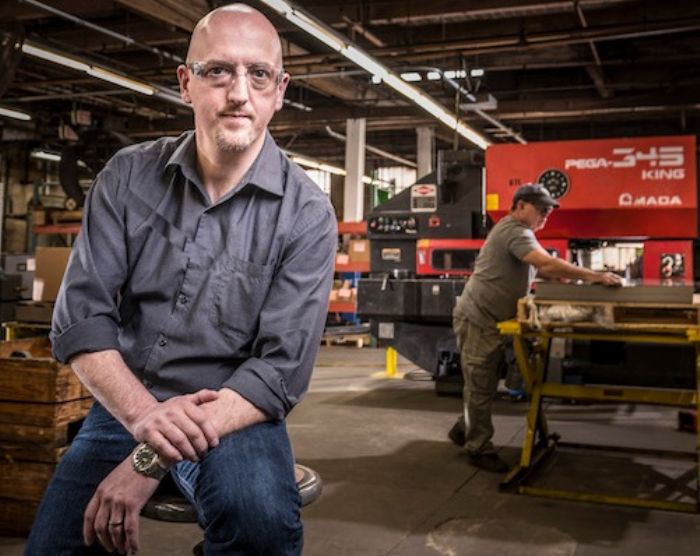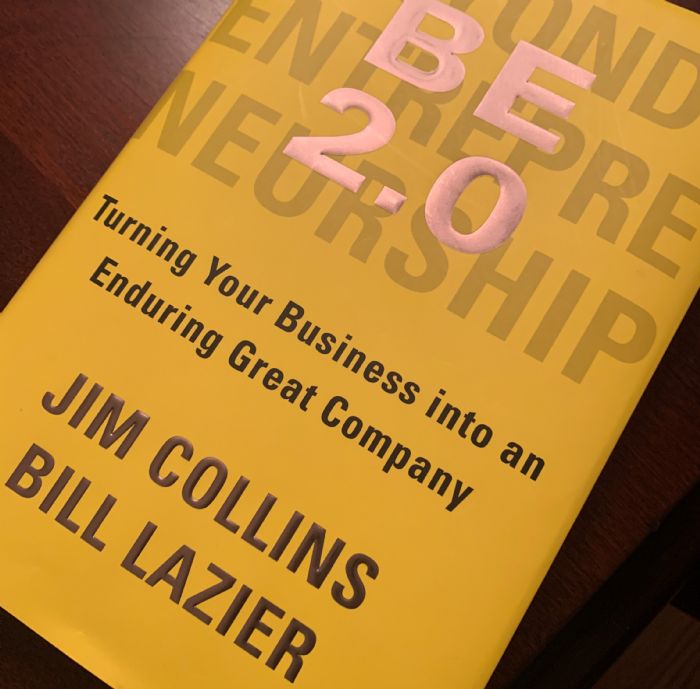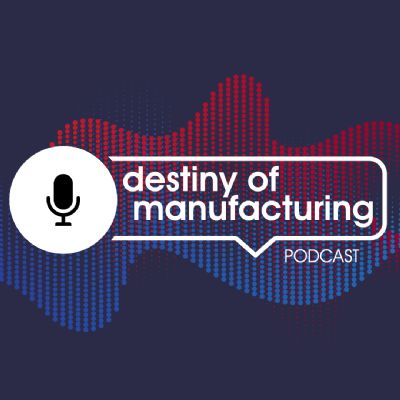Q: What are the biggest challenges you face as a company leader?
Cosgrove: Balance―straddling the line between work time, family time and “me” time. I also wrestle with judging how much to push people―whether it be a situation with a customer, employee or supplier―versus backing off.
While I can be demanding and will strive for excellence, our lean structure and relatively small size means that many people wear many hats, myself included. That can make balance, especially when it comes to delegating, difficult. I often find myself torn between optimistic aggression and risk aversion, as eloquently described by Jocko Willink’s book, “Dichotomy of Leadership.”
Q: What are two or three of the most important things you look for in mid-level managers?
Cosgrove: Do they fit the company culture? Not in a cookie-cutter way that will not disrupt the culture, but in a way that advances the organization’s goals. And, can they guide and manage themselves and their time?
I’m slow at hiring, and during the process I try to gauge how a candidate’s first 30 to 90 days on the job might evolve. Do management candidates believe that they’ll need a lot of support for the first 30 days, but at 90 days be off and running? That’s different from people who say that they’ll head directly out to the shop floor and start evaluating inputs and the decisions being made.
Some of the most important decisions I’ve made have been not hiring the wrong person. And, in “Beyond Entrepreneurship 2.0,” the authors warn against hiring only structured people that fit certain roles. The say, ”Fight the tendency to hire too many stability conscious people as you grow by always hiring a few wild ducks.”
Hiring only those who “fit” easily can limit curiosity and innovation. I believe that young and dynamic companies are better suited to continuously iterating and challenging the status quo, so we seek to be young at heart and dynamic in our management team, even if the company is 70 years old!
Q: What are two things that you believe your company is doing well? What's one thing that you wish you could change?
Cosgrove: We have grown a lot in the past 3 years and mostly have managed that growth very well. The ability to manage change is rooted in the “can-do” culture of the team. Our safety strategy also is working well, as we set a new company record a couple of years ago of 1038 days worked without a lost-time incident. After a minor incident broke the streak, we got right back in the saddle and are now at more than 600 days without an incident.
One of the most effective changes we’ve made recently to focus more attention to safety is asking every employee in the company to attend at least one safety-team meeting per year. This has elevated issues that might otherwise have gone untended, putting them under a spotlight so that we can address them.
Where can we improve? We need more structure around our ongoing workforce training and development. We need to make sure that we’re training with a purpose, addressing specific objectives and looking at measurables to gauge our effectiveness.
Many of my thoughts on training derive from two books: “Traction,” by Gino Wikman, and “Measure What Matters,” by John Doerr. They similarly profess that companies should establish cascading goals, starting at the top and then asking everyone throughout the company to tie their objectives to those top-level goals. The management team then establishes a workforce-development plan to help each employee meet their individual goals. In this way, training flows through the company, top down, tapping into the power of the entire workforce and ultimately enabling those top-level goals to be met. We’re not quite there yet.
Q: How do you encourage and motivate your management team?
Cosgrove: I think motivation often is overrated. People easily can get caught in a trap thinking that they need motivation and inspiration in order to take actions. In fact, the opposite really works―action leads to inspiration leads to motivation leads to action—it’s a terrific cycle. Mark Manson has written on this in his blog and in books.
Thanks to Bob Laystrom, our board chairman, when I took on
the role as president 5 years ago so many employees here already were
self-motivated. The encouragement side is a bit more intentional, starting with
trying to focus on connection--which is rooted in trust, candor, vulnerability,
openness and compassion. You know, the human parts of human capital!
Q: Can you provide an example of a solid management decision that you made during the COVID-19 pandemic, and how it helped to address a major pandemic-related challenge?
Cosgrove: We had an early insight on what was happening in Wuhan in January 2020 because one of my colleagues in the Precision Metalforming Association CEO peer group has a factory there. Those real-world insights allowed us to be better prepared, it seems to me, than some others in our industry. So, we knew early on that it was serious and also that it was a very fluid situation. We communicated early and often with all of our employees about the value of scientific- and medical-based opinions.
We said very frankly that we would take the entire situation
seriously, and that we would not rely on rumor, hearsay or political agendas.
Sticking to that messaging and being quite direct kept everyone on the same
page right from the start.
While many were stressed and concerned, no one, despite some
tough personal situations, deviated from the path of showing up, supporting
each other and safely getting to work. That comes from cultivating a level of
trust in management, and of personal responsibility to each other. Communication has been, and will continue to
be, top of mind.
Technologies: Management
 This month we invite Colin Cosgrove, president of Laystrom
Manufacturing, to share his insights. Laystrom Manufacturing, celebrating its 70th
anniversary in 2021, lists among its specialties prototype production in as
little as 2 to 3 days, and rapid development of cost-effective fabricated sheet
metal parts and assemblies.
This month we invite Colin Cosgrove, president of Laystrom
Manufacturing, to share his insights. Laystrom Manufacturing, celebrating its 70th
anniversary in 2021, lists among its specialties prototype production in as
little as 2 to 3 days, and rapid development of cost-effective fabricated sheet
metal parts and assemblies.  Cosgrove: I recently finished “Beyond Entrepreneurship 2.0,” by Jim Collins and Bill Lazier. It’s focused on providing sound advice for smaller companies, a very appropriate lens through which I can view Laystrom Manufacturing. It is inspirational and pragmatic at the same time, filled with solid fundamental truths, such as: “If you have more than three priorities, it’s an admission that you don’t have any priorities.” This particular point is a good reminder to stay focused on just a handful of improvement projects - which we derived from a lengthy list developed via SWOT analysis. Whittling down the list ensures we identify and then address the most significant and meaningful priorities, and it provides clarity—for me and for the entire organization.
Cosgrove: I recently finished “Beyond Entrepreneurship 2.0,” by Jim Collins and Bill Lazier. It’s focused on providing sound advice for smaller companies, a very appropriate lens through which I can view Laystrom Manufacturing. It is inspirational and pragmatic at the same time, filled with solid fundamental truths, such as: “If you have more than three priorities, it’s an admission that you don’t have any priorities.” This particular point is a good reminder to stay focused on just a handful of improvement projects - which we derived from a lengthy list developed via SWOT analysis. Whittling down the list ensures we identify and then address the most significant and meaningful priorities, and it provides clarity—for me and for the entire organization.







 Podcast
Podcast